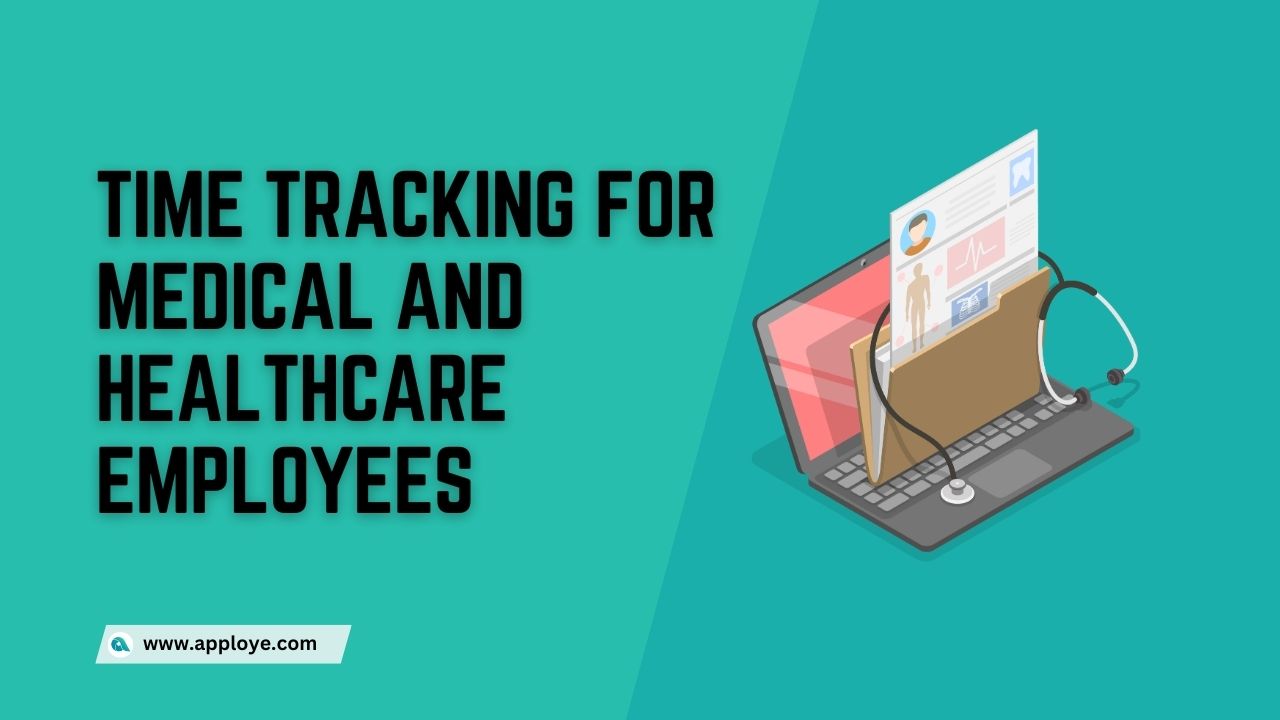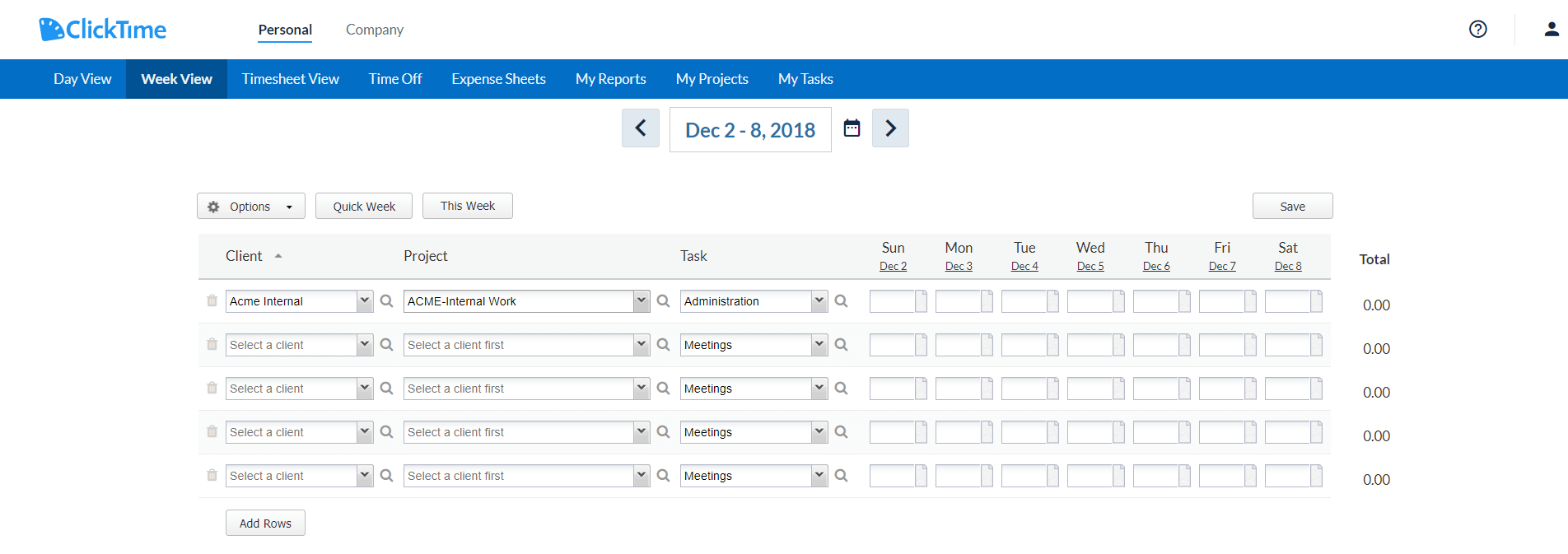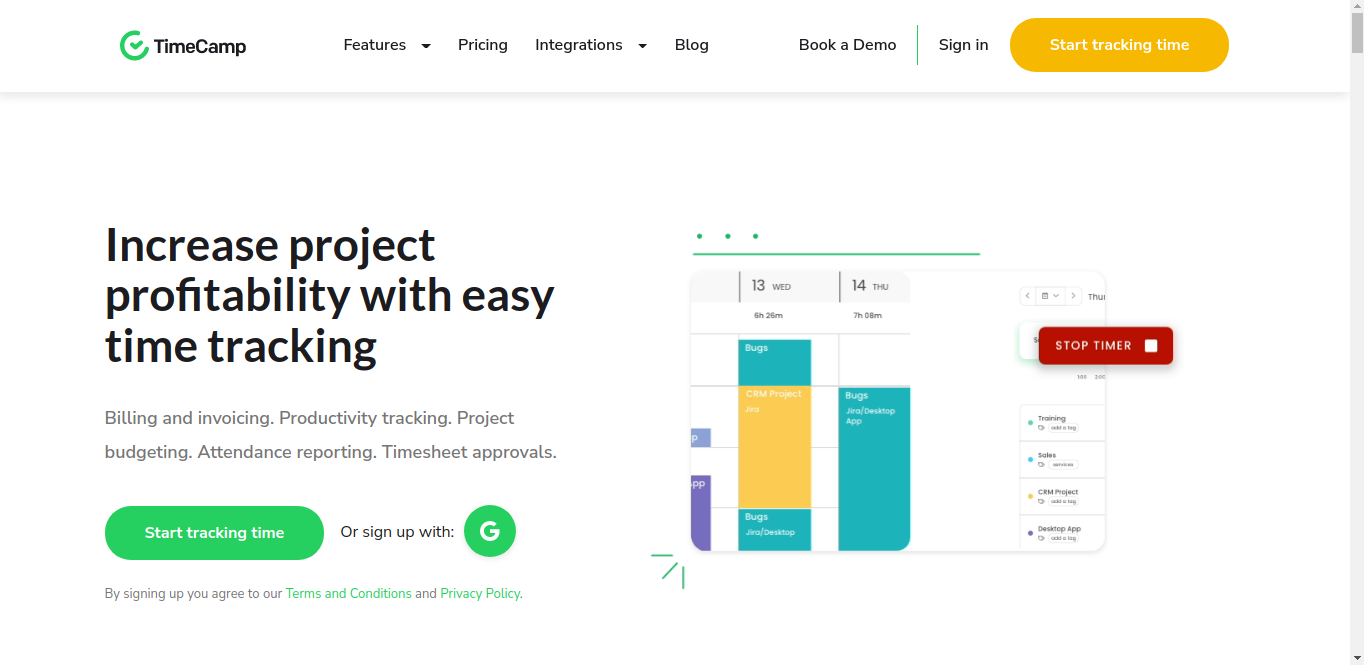Time Tracking for Medical and Healthcare Employees
No Credit Card Required.

All people use their 24 hours a day in different ways. It’s impressive how often we see courses on time management and advice from people, teaching others to become productive. In reality, chances are the all-knowing gurus fail to cope with all the planned tasks.
The medical staff is one of the most overloaded workers. Doctors and nurses need to react rapidly, work under pressure, and compile endless documents. The pandemic has only highlighted existing challenges. Time is a precious resource for medical employees as it may save someone’s life.
How do you manage tasks, so they don’t become a cycle of problems without sleep and rest? Track time and control what takes longer than you planned. Luckily, there are tools for simplifying this process. We propose this article with time-tracking benefits and software for medical and healthcare employees.
How Does Time Tracking Work?
Time tracking is the process of measuring how many hours employees work. Businesses introduce time tracking software and other supporting technologies to automate this activity, record data, and monitor when employees clock in and out. It helps various spheres, be it financial consulting firms, Magento development services, or marketing agencies.
Time tracking leads to more efficient procedures during each shift. You know how much time specialists need for a specific task and step in when something prevents them from finishing it. Why does a workforce management strategy need effective time tracking?
It enables managers to make deliberate, thorough schedules and staffing plans. It also answers the following questions:
- Where do employees spend the day?
- When do they start and finish?
- Do they get adequate payment for this?
Special software lets employees manage their timekeeping and get real-time insights for data-driven decisions. In addition, managers use it to analyze trends. For example, when someone starts overworking, you can stop these patterns to prevent exhaustion and attrition. Managers can modify schedules and see the connection between such changes and improvements, such as:
- higher employee satisfaction and loyalty;
- an increase in productivity;
- savings on costs to hire new employees;
- more effective patient care.
The Importance of Time Tracking in the Healthcare Industry
1. Keeping Track of All Employees
The 2019 American Community Survey by the Census Bureau found that the healthcare sector employed 22 million people. It accounts for 14% of all American workers. Healthcare is one of the largest and fastest-growing industries in the US.
It requires much time and resources to manage staff without proper tools. How do you calculate payroll? How do you marry the payment with the amount of accomplished work? It becomes even more complicated, given that medical employees have shift schedules, leading to mix-ups or errors.
You may opt for digital solutions, such as spreadsheets in Excel. However they lack connectivity with other departments, and procedures may vary from one employee to another, causing chaos in the documents. That’s why time-tracking systems are essential for accurate monitoring 24/7.
2. Avoiding Burnout with Paperwork
Long shifts are among the features of working in the healthcare sector. Medical professionals should stay focused on their patients’ conditions, not on filling in the documents when they appear at the hospital. Solutions like Emr for small practice can help streamline administrative tasks, allowing healthcare providers to spend more time with patients and less time on paperwork.
Employee time tracking systems are crucial for removing this unnecessary step. Workers can correctly plan their workloads, log in with one click, and stay connected on the go.
Such solutions save the effort and money spent on inputting and modifying staff hours and shifts. Mobile apps, GPS features, programmed reporting, and other features make these tools a must in healthcare. Professionals can sign in and out and track their regular and overtime hours. Understanding the best clinic software strategies can help clinics choose tools that streamline operations and improve efficiency.
And here comes another advantage. There is no need to submit timesheets manually every week or month. Time tracking tools do everything for you.
3. Fewer Human Mistakes
Accuracy and attention to detail are essential in the healthcare and medical industries. Efficient time-tracking software doesn’t just count how many hours employees spend at work during the day.
It tackles potential timesheet problems. How? By examining the staff workload and shifts over time in time-tracking tools, businesses may track the level of employee tiredness and overall health.
Accurate time tracking isn’t just about efficiency; it’s also about ensuring sensitive data is handled with care. In the healthcare industry, HIPAA compliant data collection is vital to protect patient information while managing staff schedules and workloads securely.
This information may assist in minimizing stress as employers can give someone time off or compensate for the overwork. The bottom line is that such tools reduce the number of human errors caused by inattentiveness or hurry.
4. Preventing Time Theft
Time theft is an act of not working during the stipulated period. It means employees don’t fulfill their duties during working hours, arrive late at work, go home earlier than they can, or do their personal stuff. Time theft happens due to various reasons, such as:
- lack of motivation when they feel overwhelmed by the number of duties;
- insufficient payment;
- when they think you won’t notice their absence.
The healthcare sector is the sphere where time theft may thrive. Employees can chat with their colleagues, extend their coffee breaks, or clock in for other workers to substitute. It may influence someone’s health, so you need solutions to prevent this. Modern tracking software can stop time theft in healthcare by holding workers accountable.
5. Processing Payrolls Quickly
Medical facilities’ day-to-day operation depends on the healthcare sector’s administrative side. It includes figuring out payroll, handling employee wages, and giving the proper compensation to everyone.
That’s where good software for healthcare personnel comes to your aid. It allows administrators and care providers to easily take data from the program and transmit it to the organization’s payroll system.
Additionally, a robust video API for healthcare enhances these systems, enabling seamless communication and collaboration between medical professionals, even across different locations.
Thus, health staff stays organized and focused on their schedules and log work hours online. The software also reduces payroll costs due to fewer mistakes and speedier processing.
The Impact of Poor Time Management
You may understand the importance of time-tracking software. However, there are many healthcare organizations with outdated approaches to measuring time. Poorly-managed staff time leads to various issues both at an individual and corporate level.
Staff will suffer from missed deadlines, poor quality of work, stress, and exhaustion. Multiply it by the number of your medical employees, and the negative effects will influence the entire organization.
What kind of effects can bad time management have on a healthcare company? Here are several examples:
- decreased motivation and energy levels. Medical employees will feel dissatisfied with the amount of work they leave behind after the shift. It may cause the feeling of not being professional enough to complete everything. This feeling leads to lower productivity and motivation. Reduced energy results in poor performance. The company may set higher standards for employees, aggravating the issue rather than solving it. More employees will resign, so you’ll have to spend time hiring someone to substitute for them.
- higher costs. The need to accomplish more before the next day causes many employees to overwork. That’s where the company may suffer. Working longer requires more resources or extra pay. Increased pressure causes more health issues, so it’s another cost for a company to compensate for frequent sick leaves.
- impact on the patient's health. Missed deadlines and other unfinished tasks don’t just influence someone’s business in health care. It directly impacts the patients’ well-being. So if overworked employees will make mistakes, it may cause irreversible consequences in someone’s life.
5 Time Tracking Software for Medical Staff
Even if you have already reduced paperwork and switched to time tracking software, it should cover all your workers, not just some departments. Inconsistency leads to delay, which costs someone’s health, not only money. Let’s analyze some of the existing solutions to monitor medical staff work.
1. Apploye

Apploye is the first tool in this list aimed at improving team performance. It’s a comprehensive time tracking, remote employee monitoring, and productivity analysis solution. It comes as a desktop/mobile application and has a Chrome plug-in for faster access.
This tool suits various teams, regardless of the employees’ location. So you can apply Apploye for onsite or remote workers and operate it on the go. Here are some of its features:
- shift and attendance tracking;
- an idle time detector;
- a Pomodoro timer;
- projects and budgeting where you can add users and manage expenses;
- scheduling events in Google calendars and sending notifications;
- creating client profiles and invoices.
Apploye has a user-friendly and well-organized interface. It provides such information as project progress, activity reports, and timesheets. These capabilities contribute to Apploye’s popularity among healthcare workers, commercial agencies, startups, and remote teams.
2. TimeTac

TimeTac is a single system to see how many hours employees put into work, when they leave, and how much time the project takes. It supports numerous users and the upgrade of software modules. So, you can utilize it in medium and big businesses in any industry.
It’s an intuitive and adaptable solution for a PC, Mac, smartphone, tablet, or a clocking-in device. Additionally, it assists in adhering to GDPR while minimizing administrative work and pointless paperwork. TimeTac has the following features:
- live and post-dated time tracking;
- the ability to assign tasks and projects;
- approval workflows with automatically computed overtime and yearly leave entitlement (how many days a worker can take as a paid holiday);
- different integrations;
- customized employee productivity reports and exports;
- COVID-19 status of employees, including vaccination records, test results, and recovery overview.
3. ClickTime

ClickTime is a time-tracking system for different businesses. Its customers include agencies, architects, consultants, healthcare, IT, charities, and more. What do they achieve with the tool?
It lets you track, manage, and schedule employee time. You can control administrative expenses, operations, and staff productivity to understand team resources better, fulfill project deadlines, and remain within budget.
ClickTime provides features for automating routine operations and streamlining reporting. As a result, you save time on updating Excel files. The software adapts to various needs, leveraging customization features for billing and project management.
If you need to access the system on the go, ClickTime offers an iPhone and Android mobile app. The tool integrates with your existing tech stack without duplicating data. Thus, you can benefit from increased productivity, data stored in one place, and out-of-the-box connectors.
👉 See our comprehensive list of ClickTime Alternatives in 2025.
4. TimeCamp

TimeCamp is a free cloud-based software for time tracking, invoicing, and reporting with an unlimited number of users. It helps various spheres of business, including the healthcare sector. Managers can work together, measure billable work hours, and monitor project status.
The main capabilities cover:
- create invoices based on the precise data;
- productivity checking, measuring website/app usage and idle time, and taking screenshots of your employees’ monitors;
- attendance monitoring for clocking in and out on time, registering overwork, and automating payrolls.
The tool provides a timesheet module to automate the process. It looks like a dashboard of the work hours. Managers can assign tasks to team members and divide the project into smaller subtasks to give to responsible employees. You can also control your budget thanks to its capability to bill time spent on particular tasks.
👉 See our comprehensive list of TimeCamp Alternatives in 2025.
5. ClockShark

Another time tracking software for healthcare professionals is ClockShark. This solution serves construction and field service workers, e.g., people working outside typical office environments. And this fact predetermines the tool features.
What can ClockShark do? It supports time tracking from smartphones. It’s beneficial for healthcare employees as they need to move from different locations and stay tuned.
The tool also comes with geo-tracking capabilities. It lets you check whether the staff is in the required location in real-time and what patients they visit. You can also send instant notifications about when it’s time to start or finish working for employees to avoid exhaustion.
ClockShark is strict about security. It’s HIPAA-compliant, meaning it encrypts sensitive data about patients. The information resides in secure servers. You can specify the access to users, give them unique credentials, and hide data from unwanted viewers.
This level of protection helps mitigate the risks associated with security breaches in healthcare, ensuring patient confidentiality and regulatory compliance.
Conclusion
Time tracking helps employees manage their days, giving employers a transparent overview of business operations. Healthcare time tracking is a challenging process. And the changing environment requires you to automate pay policies and procedures so that paperwork won’t disrupt the workflow.
As soon as you switch to industry-specific best employee time tracking software, you can see immediate improvements. Healthcare administrators, staff, and patients gain from increased flexibility. They get better insights into workforce habits and trends and minimize possible issues with overwork or inefficient budget spending.
Time tracking systems let workers control how they record their time. As a result, they become more satisfied and less likely to burn out. This software lets employees keep everything in one place to see how much time off work they had in a month. They can also set goals and get notified when the time to finish the project runs out.
Guest Author: Alex Husar, chief technology officer at Onilab.